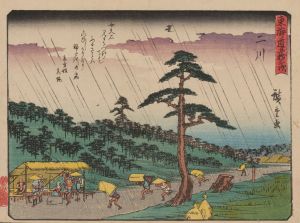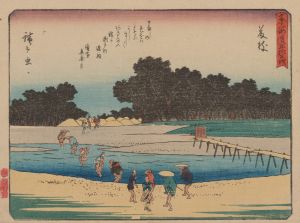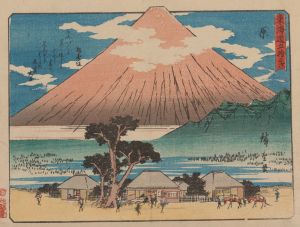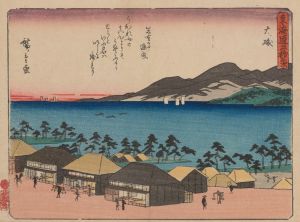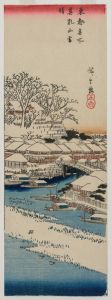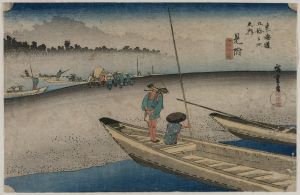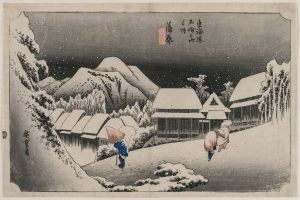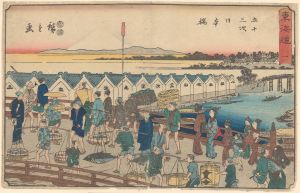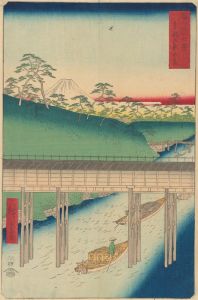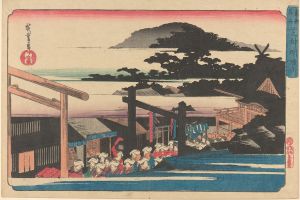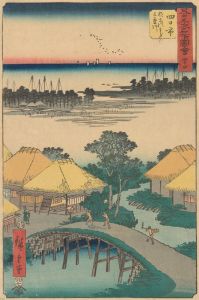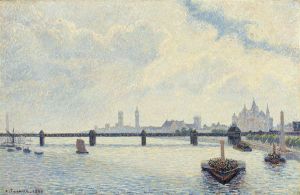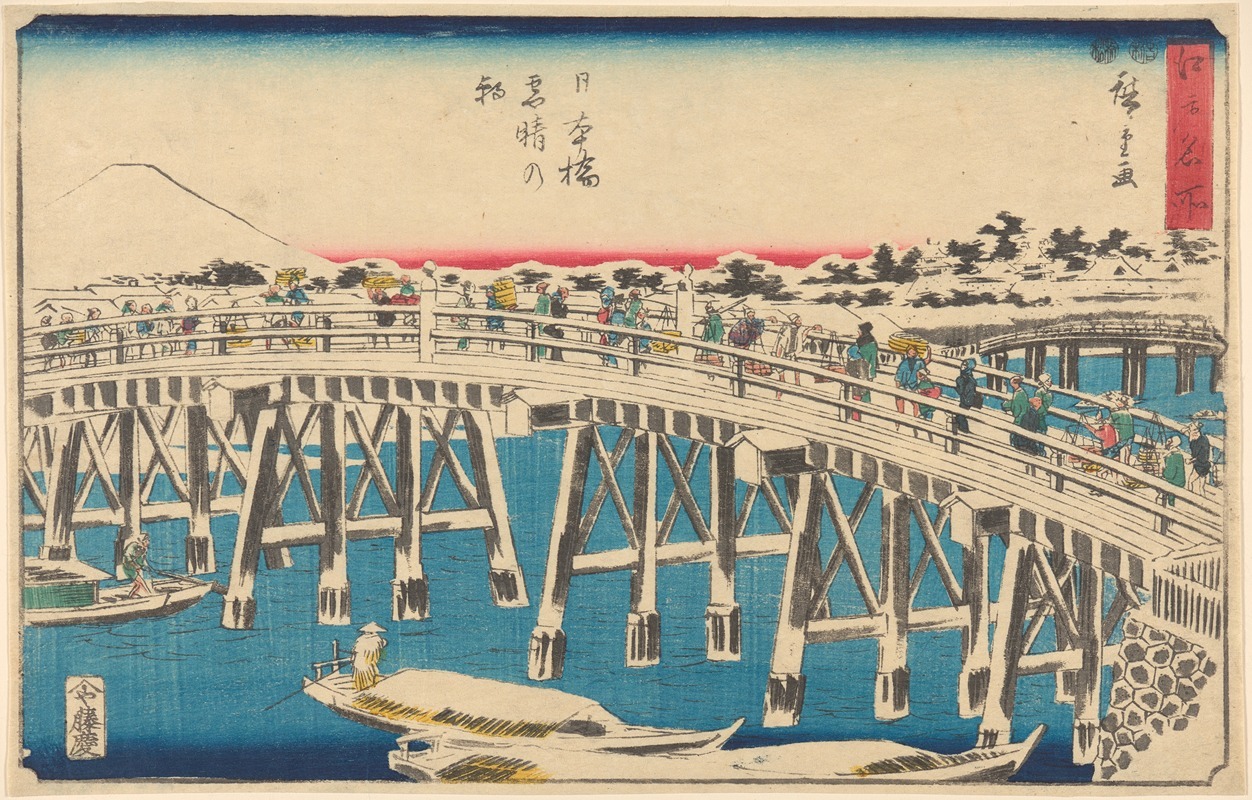
Nihonbashi in Snow
A hand-painted replica of Andō Hiroshige’s masterpiece Nihonbashi in Snow, meticulously crafted by professional artists to capture the true essence of the original. Each piece is created with museum-quality canvas and rare mineral pigments, carefully painted by experienced artists with delicate brushstrokes and rich, layered colors to perfectly recreate the texture of the original artwork. Unlike machine-printed reproductions, this hand-painted version brings the painting to life, infused with the artist’s emotions and skill in every stroke. Whether for personal collection or home decoration, it instantly elevates the artistic atmosphere of any space.
Andō Hiroshige, a renowned Japanese ukiyo-e artist of the Edo period, is celebrated for his evocative landscapes and masterful use of color and perspective. One of his notable works is "Nihonbashi in Snow," which captures the essence of a snowy day in Edo, now modern-day Tokyo. This artwork is part of Hiroshige's larger series, "The Fifty-three Stations of the Tōkaidō," which depicts various scenes along the Tōkaidō road, a vital route connecting Edo with Kyoto.
"Nihonbashi in Snow" portrays the Nihonbashi Bridge, a significant landmark in Edo, which served as the starting point of the Tōkaidō road. The bridge was not only a crucial infrastructural element but also a bustling hub of commerce and daily life. Hiroshige's depiction of the bridge under a blanket of snow offers a serene and tranquil view, contrasting with the usual hustle and bustle associated with this location.
In the composition, Hiroshige employs his signature style, characterized by a keen attention to detail and a harmonious blend of colors. The snow-covered bridge and surrounding landscape are rendered in soft whites and blues, conveying the cold and quiet of a winter's day. The figures crossing the bridge are depicted with minimal detail, emphasizing their movement and the continuity of daily life despite the weather. This technique highlights Hiroshige's ability to capture the transient beauty of nature and the resilience of human activity.
Hiroshige's work is often noted for its atmospheric perspective, a technique he uses effectively in "Nihonbashi in Snow" to create depth and distance. The receding lines of the bridge draw the viewer's eye into the scene, while the snow-laden sky and distant buildings fade into a gentle haze, enhancing the sense of space and tranquility.
The ukiyo-e genre, to which Hiroshige's work belongs, was a popular art form during the Edo period, focusing on subjects such as landscapes, theater, and the pleasures of urban life. Hiroshige's landscapes, however, stood out for their poetic and contemplative qualities, offering viewers a glimpse into the natural beauty and cultural life of Japan during this era.
"Nihonbashi in Snow" exemplifies Hiroshige's mastery in capturing the ephemeral nature of weather and season, a theme prevalent throughout his oeuvre. His ability to convey the mood and atmosphere of a scene with such economy of detail and color has made his work enduringly popular, influencing not only Japanese art but also Western artists, particularly the Impressionists, who admired his innovative compositions and use of color.
Today, Hiroshige's works, including "Nihonbashi in Snow," are celebrated for their artistic and historical significance. They provide valuable insights into the landscapes and urban settings of 19th-century Japan, as well as the cultural and social dynamics of the time. His prints continue to be studied and appreciated for their aesthetic qualities and their role in the broader context of art history.





